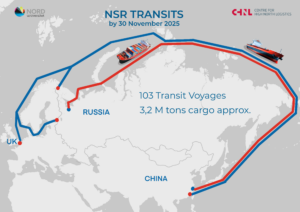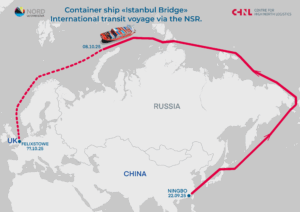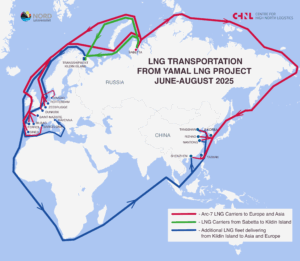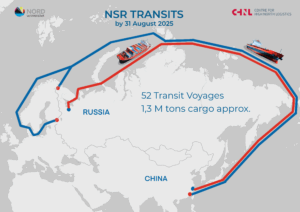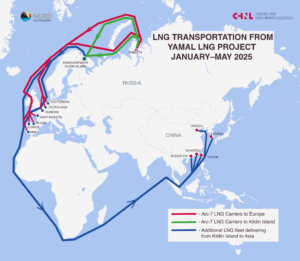In recently published study, a comprehensive extended maritime trade model has been developed to analyse container ships trade between Northeast (NE) Asia and Northwest (NW) Europe, regions that potential users of shorter alternative sea routes such as the Northeast Passage. An intriguing facet of the study is the application of Structural Equation Modelling (SEM) for the analysis and investigating which trade types between the regions could potentially expand if transit shipping via the Northeast Passage is established and the primary factors that might influence this possibility.
Key findings
A critical finding of the research is the central role of logistics performance as a determinant of international maritime trade by container ships between the analysed regions. Moreover, the model identifies the adverse impact of freight costs on maritime trade and reveals world uncertainty, represented by the World Uncertainty Index, as a significant variable affecting the eastbound trade. The analysis delves further into the nuances of trade, identifying that logistics performance and freight costs substantially but with different magnitude influence the westbound trade volume of various analysed commodity groups, including electrical machinery, equipment, and parts; plastics and articles; boilers, mechanical appliances, and parts; and vehicles and parts. This finding implies that enhancements in logistics performance and reductions in freight costs could potentially stimulate trade in these commodities. Additionally, it is discovered that world uncertainty indirectly impacts these commodities through freight costs and economic growth.
Implications and Future Directions
The findings of study hold extensive implications for policy makers and shipping companies, providing them with vital insights to plan infrastructure development and strengthen transport corridor support services.
Future research could incorporate more comprehensive data, explore the elasticity of trade volume and future cargo flows, investigate additional commodity groups, consider environmental factors, and apply agent-based models to study future international trade and technology implementation. This paper is but a stepping stone towards the exploration of maritime trade and potential types of transit cargo via Polar sea routes such as the Northeast Passage.
Reference:
Kovalenko, A. (2023). Modelling container ship transport flow: an application to alternative sea routes between Northeast Asia and Northwest Europe. Maritime Policy & Management, 1-16. https://doi.org/10.1080/03088839.2023.2220703
